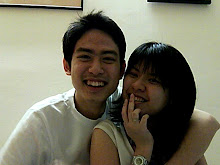Day #1 - Acquainting Seoul
Day #2 - Korean Wave
Day #3 - A Sip of Soju
»Day #4 - A Cultural Evening
- Seoul National University (서울대학교; 서울大學校)
- Yeouido (여의도; 汝矣島)
- Namsangol Hanok Village (남산골한옥마을; 南山골韓屋마을)
- Korea House
- Namdaemun (남대문; 南大門)
23 February 2009, Monday
Every year on the third Thursday of November, Korean high school graduates sit for the College Scholastic Ability Test (CSAT). This is probably the most important national event. Work starts later than usual so that office workers going to work don't cause any traffic jams. Policemen are mobilized to control the traffic, and sometimes, even to send candidates to school on time. To a foreigner who is not well-informed, it might easily be mistaken as a state of emergency. It was hard for me to imagine it until I saw it on the TV. (Yes, it's always reported on the Japanese news as well.)
I can never understand why the Koreans put so much emphasis on academic results. They treat CSAT almost like the civil exam in ancient China. It's aptly called "examination hell". Children as young as primary school students are sent to cram schools to prepare for the university entrance exam. It's a pity Korean children don't get to enjoy their childhood. When I commented to Cholong about that, she replied in a nonchalant way, "True, but you can always enjoy later in your life."
Sigh.
The ultimate goal is to enter a high-ranking university, especially the Seoul National University.

This is the gate to the Seoul National University. Its entrance is adorned with a triangular gate and a peculiar tower in the shape of a key.
The place isn't exactly a sightseeing spot. I just went there so that I can say this, "I've been to the Seoul University!" Oh, and also, this was where I had the cheapest meal in Seoul, 2500 Won. Now that's merely just enough to buy a bottle of water in Japan.
Other than that, there's seriously nothing to boast about. Now, moving on.
My next stop was Yeouido (여의도; 汝矣島), a large island at the Han River. The island got its name from "useless land", and true enough, there wasn't much to see either. There's the National Assembly Building, but there was some construction work going on nearby so the area was in a mess. I headed towards the river bank, hoping to take a good snap on the cityscape on the opposite side but the weather wasn't good enough for taking photographs. Besides, the place was in a forlorn state, thanks to (more) construction work.
Maybe I went on a wrong day but I have to say that Yeouido is no match for Odaiba back in Tokyo.
I left the island, disappointed; not at all pleased with the unfruitful morning excursion. But fortunately, my next destination was a more satisfactory one.
Five minutes' walk from exit 4 of Chungmuro station is the Namsangol Hanok Village (남산골한옥마을; 南山골韓屋마을). Hanok, means "traditional Korean house". Visitors get to see the living conditions of people from different statuses. Some of these houses were moved from their original locations; some meticulously restored. It's interesting how you could tell the house of a commoner from that of a rich family, just by looking at the number and the size of the kimchi urns kept in the yard.

One of the houses belonged to Empress Sunjeong. Being a follower of Confucianism, she lived a modest life. Her rooms have windows smaller than the usual ones, so that less firewood would be needed to warm the room during winter.
Empress Sunjeong was the last empress of the Joseon Dynasty. She was demoted in 1910 during the Japan-Korea annexation. Then, when Emperor Yunghui died without issue in 1926, the Korean monarch came to an end.
Tracing my steps back to the station, I found my way to Korea House, a famous place for traditional arts performance. I'm not usually a patron of arts, but I thought no trip to a foreign country would be complete without learning about its people and culture. Besides, I had extra cash to spend! That morning, I exchanged another 12,000 Yen for 190,000 Won. No commission charged. Now, compare that to the 13,000 Yen I spent for 150,000 Won when I bought the currency in Tokyo a month back. You've got to love the exchange rate! Anyway, 30,000 Won for the ticket was reasonable.
The program consisted of eight performances. My personal favourite being the Nongak Nori (farmer's music), where the performers wearing long-ribboned hats swing their heads as if they were high on drugs. Also, there was the lively drum performance called Samgo-mu, whose improvised version I saw in the Nanta performance two days ago. Buchaechum (fan dance) was another interesting performance, with beautiful girls and vibrant colours. The creepiest one was the Salpuri Dance, which originated from a shaman dance for exorcism.

Before calling it a day that night, I made a last stop at Namdaemun (남대문; 南大門). Remember the incident where an old man set fire to the historical structure? This is it. Too bad restoration was yet to be done. The burnt structure was still wrapped under vinyl sheet as if to cover the forlorn sight from the public.
There is, however, another attraction in the vicinity, the 24-hour Namdaemun Market. It is somewhat similar to Lorong Kulit in Penang, or Chinatown in Kuala Lumpur, where cheap goods can be found, provided that you know how to bargain.

Earlier this year, tourist information booths were set up in the market. The effort of the government to woo tourists should indeed be lauded but perhaps they should start by cleaning up the mess in front of the booth!

0 persons flung their shoes:
Post a Comment